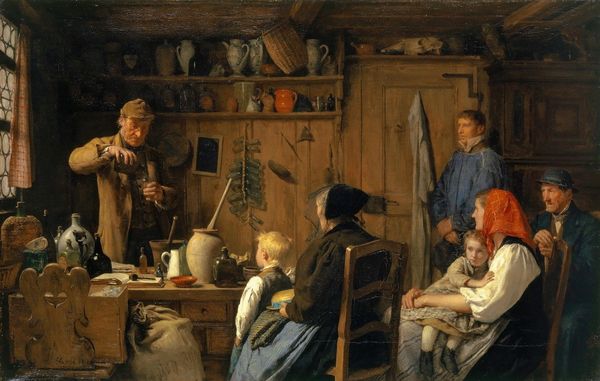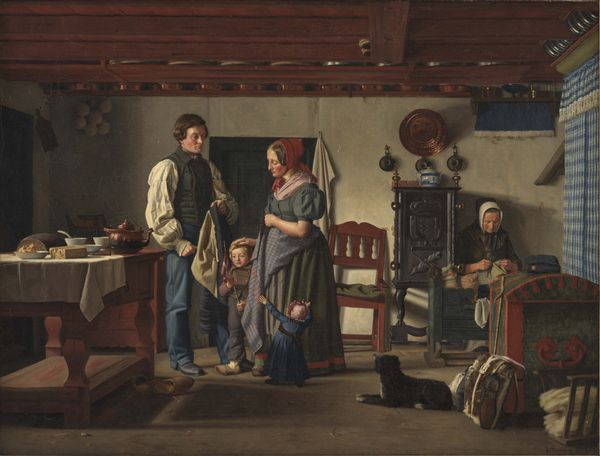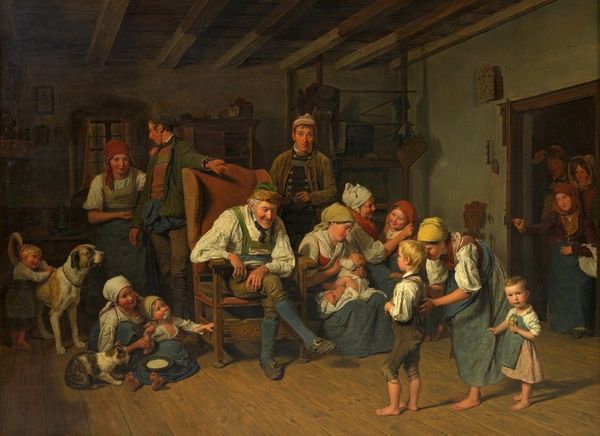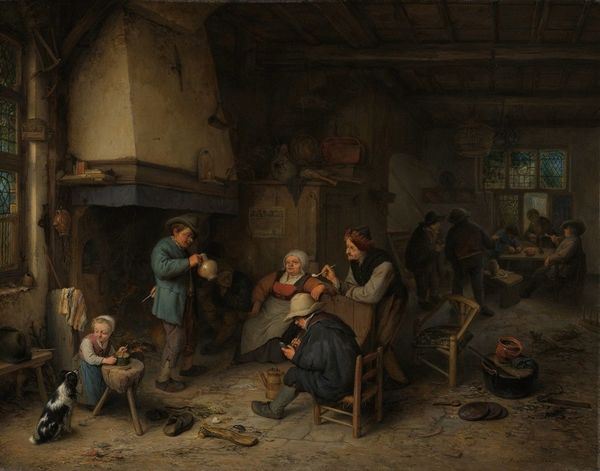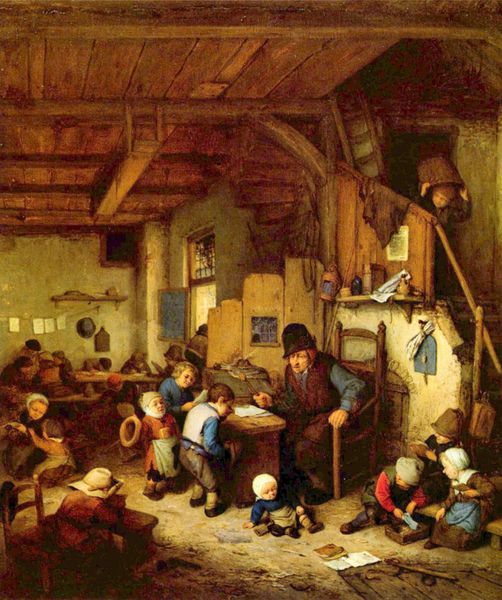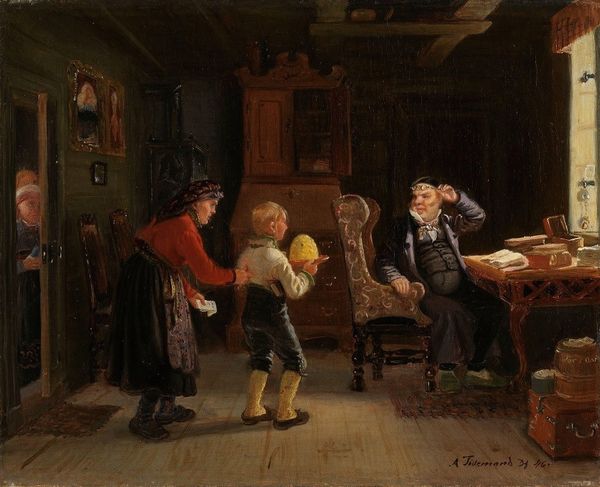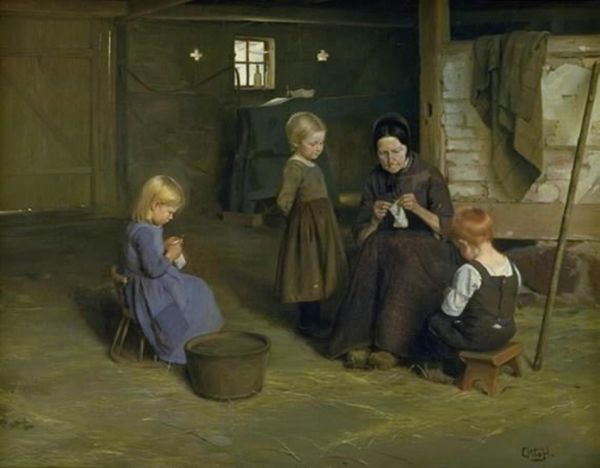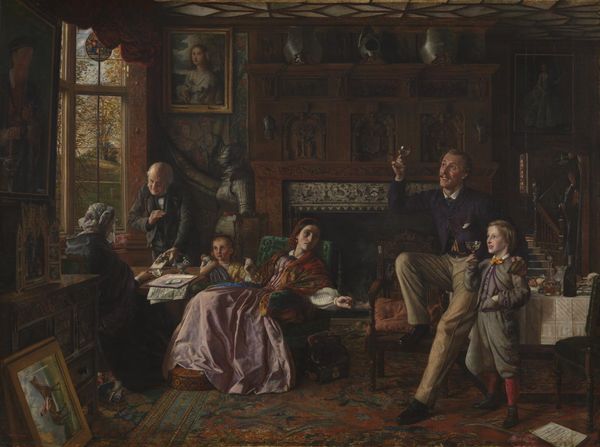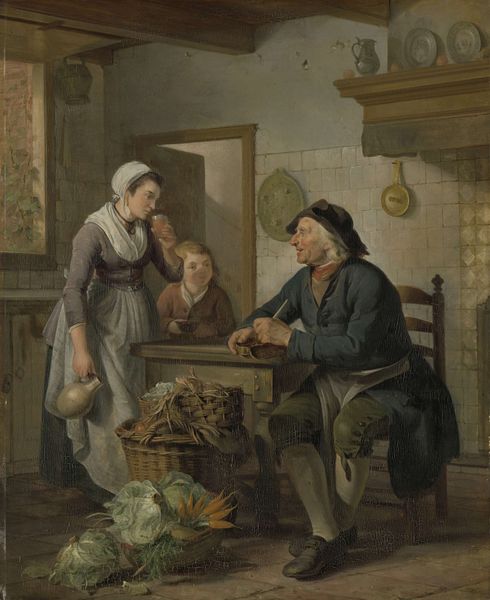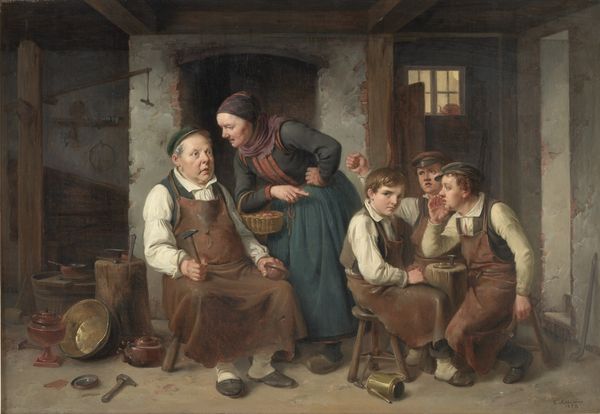
painting, oil-paint
#
düsseldorf-school
#
portrait
#
narrative-art
#
painting
#
oil-paint
#
genre-painting
#
realism
Dimensions: 55 cm (height) x 71.5 cm (width) (Netto)
Curator: Here we have David Monies' "The Watchman on New Year's Visit. Kitchen Scene" painted in 1855. It’s currently held at the SMK, the National Gallery of Denmark. Editor: My first impression is that this is a meticulously rendered interior scene. The textures, particularly the worn wood and dull metal, almost convey a sense of quiet melancholy. Curator: It exemplifies a kind of realism popular within the Düsseldorf school, prioritizing narrative detail and relatable subjects, such as the social dynamics hinted at in this domestic scene. Editor: Yes, you can really sense the artist engaging with the specifics of the materials present. The painting spotlights how working class families equipped their homes and provisioned their lives, almost like a social study done with oil paint. Curator: Exactly, observe how the setting reflects a time of significant social change. We have the visiting watchman juxtaposed with the working-class family, subtly referencing hierarchical structures. What do you make of the placement and treatment of each of the characters? Editor: There is something interesting about the composition. Monies clearly understood the material implications of space; it's more than just stage setting. Curator: I would agree. It’s an illustration of social expectations of the time and a meditation on labor. A watchman's presence, framed during what's traditionally a season of rest, disrupts the domestic calm. Editor: Notice also how carefully he has arranged everything, from the mother holding the child to the almost too perfect plate of vegetables. All this labour made to appear easy and available in the image through Monies craft is intriguing. It makes you wonder what those things signify as goods? Curator: He’s showing us that those seemingly insignificant items are critical aspects of how people lived and labored, and this, in itself, becomes a visual social commentary. The Düsseldorf school had the desire to democratize painting through a form of pictorial reporting on everyday experiences. Editor: Yes. He depicts a precise rendering of what existence was like through an accumulation of material indicators. I keep coming back to those worn surfaces, though. The texture becomes a means of communicating something about the subjects without overtly saying it. Curator: Ultimately, this piece goes beyond mere representation. It engages the viewer in understanding 19th-century social relations. Editor: Right, through that attention to material and class differences, Monies gives us an interesting perspective to his socio-historical time.
Comments
No comments
Be the first to comment and join the conversation on the ultimate creative platform.

